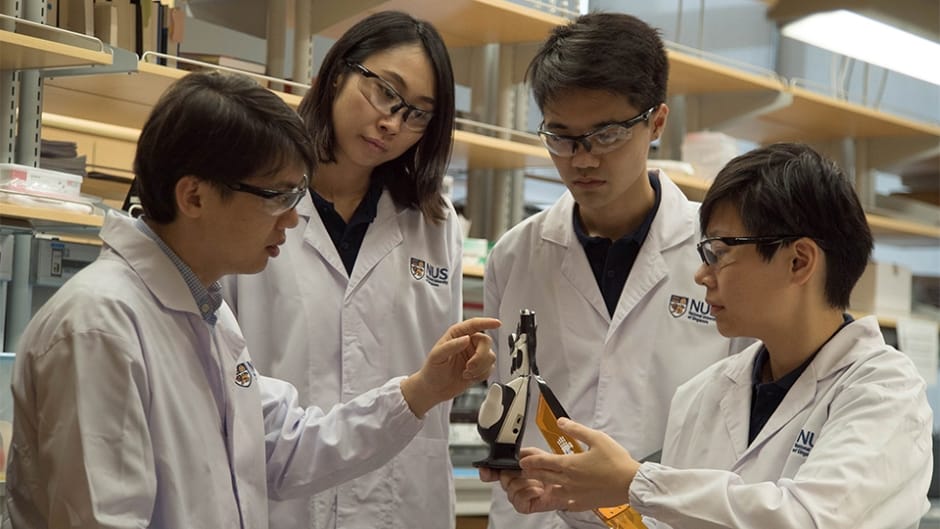
Developed by a team of National University of Singapore (NUS) researchers, the Asynchronous Coded Electronic Skin (ACES) is said to have ultra-high responsiveness and robustness to damage and can be paired with any kind of sensor skin layers to function effectively as an electronic skin.
The breakthrough by Assistant Professor Benjamin Tee and his team from NUS Materials Science and Engineering is reported in Science Robotics.
“Humans use our sense of touch to accomplish almost every daily task, such as picking up a cup of coffee or making a handshake. Without it, we will even lose our sense of balance when walking. Similarly, robots need to have a sense of touch in order to interact better with humans, but robots today still cannot feel objects very well,” said Asst Prof Tee.
ACES is made up of a network of sensors connected via a single electrical conductor and differs from current electronic skins that have interlinked wiring systems that can make them sensitive to damage and difficult to scale up.
“The human sensory nervous system is extremely efficient...[and] is also very robust to damage,” said Asst Prof Tee. “Our sense of touch, for example, does not get affected when we suffer a cut. If we can mimic how our biological system works and make it even better, we can bring about tremendous advancements in the field of robotics where electronic skins are predominantly applied.”
According to NUS, ACES can detect touch more than 1,000 times faster than the human sensory nervous system and differentiates physical contact between different sensors in under 60 nanoseconds. NUS further claim that ACES-enabled skin can also identify the shape, texture and hardness of objects within 10 milliseconds, which is enabled by the high fidelity and capture speed of the ACES system.
The ACES platform is also adaptable and can remain functional following physical damage because all the sensors in ACES can be connected to a common electrical conductor with each sensor operating independently. This allows ACES-enabled electronic skins to continue functioning as long as there is one connection between the sensor and the conductor, making them less vulnerable to damage.
ACES’ wiring system and responsiveness are key characteristics that NUS believe will facilitate the scale-up of intelligent electronic skins for Artificial Intelligence (AI) applications in robots, prosthetic devices and other human machine interfaces.
“Scalability is a critical consideration as big pieces of high performing electronic skins are required to cover the relatively large surface areas of robots and prosthetic devices,” said Asst Prof Tee. “ACES can be easily paired with any kind of sensor skin layers, for example, those designed to sense temperatures and humidity, to create high performance ACES-enabled electronic skin with an exceptional sense of touch that can be used for a wide range of purposes.”




Glasgow trial explores AR cues for autonomous road safety
They've ploughed into a few vulnerable road users in the past. Making that less likely will make it spectacularly easy to stop the traffic for...